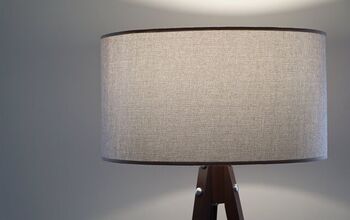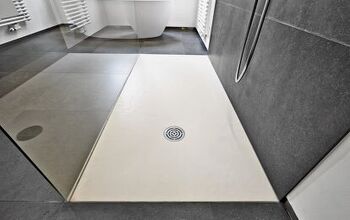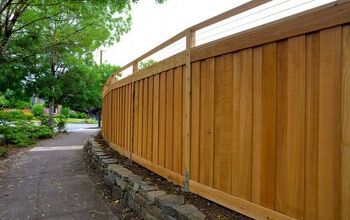11 Ways To Use Leaves From Your Banana Tree

If you have banana plants in your yard, then you know how quickly these tropical trees spread. Each banana plant can produce several bunches of tasty bananas each year. When they aren’t making fruit, these plants grow giant green leaves. In addition to being great to look at, you can use banana leaves in ways you may never have thought of.
Use banana leaves to wrap food, such as pastelles, tamales, and other Latin American and Asian dishes. Feature them at get-togethers as small plates for finger foods, or as table runners on a buffet. Line steamer baskets with these leaves as natural wax paper, and use them to create temporary flower pots for plants you want to transplant. Banana leaves are also a great fertilizer, and are a great addition to a compost pile.
Most people grow banana plants for the sweet yellow fruit, but this is just one use for this incredible tropical tree. The leaves on a banana tree have many incredible uses, several of which can save you money, enhance recipes, and take your parties to the next level. Below is a list of all the best uses for banana leaves, as well as tips on how to use them safely.
Tips To Remember When Using Banana Leaves
1. Use The Freshest Leaves
Since banana trees are constantly growing new leaves, it’s best to use the freshest ones on the tree. Don’t use underdeveloped leaves, as they are thin and don’t have the correct shape for most uses mentioned on this list. You should also avoid using older leaves, as they tend to have brown spots and more imperfections.
2. Remove Brown Edges
Even fresh leaves can have some brown edges and imperfections. This is particularly common in hot regions. You can still use banana leaves with brown and crispy edges if that’s all you can find. Simply remove these imperfections before using them in the home.
3. Carefully Wash Leaves Before Use
You must wash banana leaves thoroughly before using them. This is particularly important if you plan to use them for culinary purposes. Washing these leaves in water with dish soap will easily remove dirt and insects, making them suitable for use in the kitchen.
4. Remove The Thick Stem For Culinary Use
Banana leaves have thick stems and mid-veins. These help support the leaves and should be kept when you add them to flower arrangements. When using banana leaves for culinary purposes, however, you should remove the stem and mid-vein, as this part of the leaf won’t bend and will make it harder to work with.
5. Use Sharp Scissors To Cut Leaves
Due to their structure, banana leaves rip easily, and often not in the direction you intend. To cut and reshape a leaf, use sharp scissors rather than a knife. This will give you more control and allow you to cut a leaf exactly how you want, with fewer mistakes.
11 Ways To Use The Leaves On Your Banana Tree
1. Fertilizer
One of the best and easiest ways to use banana leaves is as a natural fertilizer. For one, the leaves are rich in several nutrients that plants need to thrive, including potassium, phosphorus, and magnesium.
Banana leaves also decompose rather quickly. As they decompose, they continue to release the nutrients into the soil, feeding your plants consistently in the process.
2. Compost
Since these leaves contain many nutrients, they make a great addition to any compost pile. They boost the nutrient value of any compost, and the leaves decompose quickly. This means you can have a better compost that is ready to use quickly.
Add fallen and brown leaves to your compost. These dry dead leaves have few other uses, and they will also break down faster than fresh leaves.
3. Use To Wrap And Cook Foods
Banana leaves are used to wrap and cook many foods, particularly in Latin American, Asian, and Polynesian cuisine. Use these leaves to prepare tamales, pasteles, and other foods you wrap and then steam.
Banana leaves are also used to naturally steam fish and other meats. Simply add the protein, seasonings, and vegetables to the banana leaves, wrap, and bake or steam them. The banana leaves add a subtle flavor and make for a memorable and authentic presentation.
4. Food Storage
If you don’t have plastic wrap or Tupperware containers, you can use banana leaves as temporary food storage containers for many non-liquid foods. When properly wrapped, these leaves can lock in freshness, and help prevent bacterial growth. The surface of the leaves are also naturally non-stick.
This method should only be used for short-term storage. It is not effective when preserving food in the freezer for future use.
5. A Natural Parchment Paper In Steamer Baskets
If you use steamer baskets to make dumplings, steam buns, and other items, then you know you must place parchment paper or another barrier to prevent food from sticking to the basket. Instead of wasting parchment paper, you can use fresh banana leaves to line a steamer basket.
The waxy leaves act as a natural non-stick surface. Remember to poke holes in the leaves to allow steam to circulate in the basket. The banana leaves also add a layer of authenticity and are sure to wow your guests when you serve your steamed creations.
6. Create A Festive Table Runner
Banana leaves also make fantastic decor. The leaves are large, symmetrical, and very tropical in appearance. If you plan on hosting a luau or exotic brunch, use fresh banana leaves to create a table runner in the dining room.
Remove the stem and shave to the mid-vein to ensure the leaves rest flat on the table. This is a great way to enhance your dinner party decor without spending any additional money.
7. Perfect For Buffet Platters
Banana leaves can be used in many ways when you host parties, especially if you feature a buffet. These leaves are used as platters in several cultures instead of large plates, and they can add drama to any buffet setup in your home. Instead of showcasing mismatched platters, hide the platters underneath fresh banana leaves, giving your buffet line a fresh and natural look.
Using banana leaves as buffet platters also makes cleanup a breeze, as you can simply toss them in your compost pile after the party.
8. Use As Small Plates For Finger Foods
Even if you aren’t hosting a buffet dinner, you can still use banana leaves instead of plates. If you serve finger food, cut small square-like plates made of banana leaves. These natural plates will make dishwashing easier at the end of the party, and are better than using napkins, which can quickly become soggy. They also add flair and are sure to be a conversation starter at cocktail hour.
9. Make Temporary Pots For Plants
If you plan to transplant small plants into the ground, consider placing them in a biodegradable pot made of banana leaves. Using twine and a few simple folds, you can transform these large leaves into garden pots.
They will last for several weeks, and when you are ready to add the plant to your yard, simply bury the entire banana leaf pot along with the plant. The pot will break down naturally. It will also feed the plant essential nutrients in the process.
10. Treat Minor Burns
The nutrients and antioxidants found in banana leaves are not only good for your soil, they can also help heal your skin. Nutrients found in banana leaves can be used as a natural remedy to dress and heal skin burns and otherwise irritated skin.
11. Brew A Medicinal Tea
Banana leaves can even be used to make tea. Simply boil fresh banana leaves in water for several minutes, and enjoy this earthy and nutritious beverage. Banana leaf tea has several health benefits. It is used to improve digestion, help boost your immune system, and even reduce inflammation in the body.
Wrapping Up All The Ways You Can Use Your Banana Leaves
If you have a banana tree, then it’s important to remember that you can use the leaves of this plant even more than the coveted yellow fruit it produces. In the kitchen, you can use banana leaves to wrap foods like tamales, pasteles, and even fish and other proteins. Use leaves to line steamer baskets instead of parchment paper, and feature them on your buffet instead of serving platters.
You can use banana leaves as table runners, small plates, and even as biodegradable flower pots. These nutrient-rich leaves make them great as a natural fertilizer, and you can boil them to make a medicinal tea.
Related Guides:

Tom Gaffey is an expert writer who currently resides in Washington D.C. Tom has a passion for real estate and home improvement writing, as well as travel and lifestyle writing. He lived the last twelve years in Hawaii where he worked closely with luxury resorts and event planners, mastering his knowledge of aesthetics and luxury products. This is where he found his passion for home improvement and a keen interest in DIY projects. Currently, Tom resides in Washington D.C, and also working on his debut fiction novel.
More by Tom Gaffey














![10 Best Zero Turn Mowers – [2022 Reviews & Ultimate Buyer's Guide]](https://cdn-fastly.upgradedhome.com/media/2023/07/31/9070522/10-best-zero-turn-mowers-2022-reviews-ultimate-buyer-s-guide.jpg?size=350x220)












